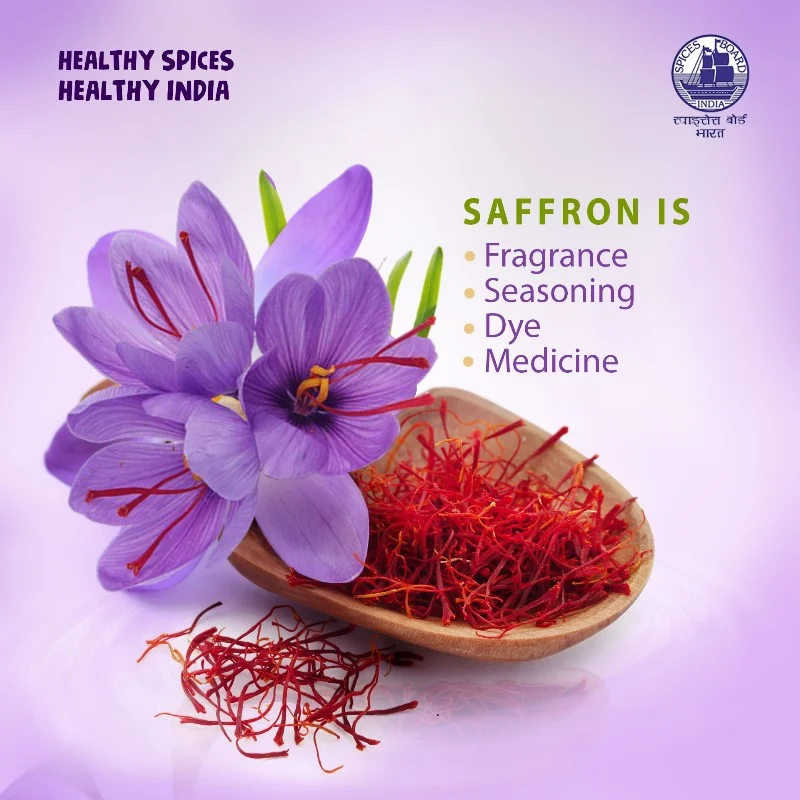
Kishtwar Saffron, a highly esteemed spice cultivated in the Kishtwar Region of Jammu and Kashmir, has achieved the prestigious Geographical Indication (GI) tag from the Geographical Indications Registry. This recognition emphasizes the distinctive identity and exceptional quality of saffron grown in the Kishtwar region. This further enhances its renowned reputation. The GI tag underscores the unique geographical features and traditional practices associated with Kishtwar saffron, providing consumers with assurance regarding its authenticity and origin.
Kishtwar Saffron: Cultivation and Rich Heritage
Originating from the scenic Kishtwar region in the mountainous terrains of Jammu, Kishtwar saffron, locally known as “KUNG” and nationally as “KESAR,” stands as a crucial cash crop in this isolated district. The saffron production area, named Mandal, covers approximately 120 hectares, making Kishtwar a significant hub for saffron cultivation.
Pinnacle Harvest: Kumkum
Kishtwar is renowned for producing the most expensive harvest of saffron, known as Kumkum. This legendary variety not only signifies the economic importance of saffron cultivation but also holds cultural value, representing freshness and purity. Saffron, with its Sanskrit name ‘Kum-Kum’ or ‘Lohit,’ is a cultural heritage in the region.
Kishtwar Saffron vs Pampore Saffron
The quality of Kishtwar saffron surpasses even the well-known Pampore saffron from Kashmir. This superiority is attributed to factors such as the quality of the land, climate, and meticulous technique of plucking flowers and separating the red and yellow carpels from the petals.
Agricultural Practices and Challenges
Saffron cultivation in Kishtwar is a meticulous and labor-intensive process that demands careful attention. Moderate rainfall during bulb planting and flowering is crucial for a successful harvest. The annual production of approximately 5 quintals reflects the dedication of local farmers despite the challenges faced in maintaining saffron fields.
Cultural and Medicinal Significance
Beyond economic importance, saffron holds cultural and medicinal value in the region. Known as ‘Zafron’ in Persian, it is not just a cooking condiment but also finds a place in Hindu traditions. Hindus in India use saffron as a mark (Tilak) on the forehead, considering its aroma and color as auspicious. The spice is also utilized in medicines and as a subtle, digestive, sedative, and exhilarant flavor in cooking.
Economic Impact and Medicinal Benefits
Saffron cultivation has significantly contributed to the economic well-being of growers in Kishtwar. The high medicinal value of saffron has made it a sought-after commodity. Crushed saffron carpels mixed with milk create a healthy tonic, showcasing the diverse applications and benefits of this valuable spice.
About GI Tag
- A geographical indication (GI) is a designation or symbol assigned to products originating from a particular geographical area.
- GIs serve as a certification that these products are crafted using traditional techniques or possess distinct characteristics tied to their place of origin.
- These designations are applicable to a wide range of items, including food, handicrafts, and industrial products.
- Importantly, the GI tag guarantees that only authorized individuals or entities are permitted to employ the product’s name. It safeguards its integrity and origin.
Who grants and regulates Geographical Indications?
- Geographical indications (GIs) fall under the category of Intellectual Property Rights (IPRs).
- They are acknowledged and safeguarded under the Paris Convention for the Protection of Industrial Property.
- At the global level, the World Trade Organization (WTO) has established the Agreement on Trade-Related Aspects of Intellectual Property Rights (TRIPS) to offer a framework for the protection of GIs.
- In India, the registration and safeguarding of GIs are overseen by the Geographical Indications of Goods (Registration and Protection) Act, 1999, which became operational in September 2003. This legal framework ensures the proper recognition and protection of India’s unique geographical origin-based products.
- Weekly Current Affairs 2025 PDF For Bank, SSC, UPSC Exams
- Unsung Heroes of India: 10 Unknown Freedom Fighters You Should Know
- 26 December Current Affairs 2023 in English
- Daily Current Affairs 2025, Check Today’s Current Affairs
- April Month Current Affairs 2024, Download PDF
- June Month Current Affairs 2024, Download PDF

Hello, I’m Aditi, the creative mind behind the words at Oliveboard. As a content writer specializing in state-level exams, my mission is to unravel the complexities of exam information, ensuring aspiring candidates find clarity and confidence. Having walked the path of an aspirant myself, I bring a unique perspective to my work, crafting accessible content on Exam Notifications, Admit Cards, and Results.
At Oliveboard, I play a crucial role in empowering candidates throughout their exam journey. My dedication lies in making the seemingly daunting process not only understandable but also rewarding. Join me as I break down barriers in exam preparation, providing timely insights and valuable resources. Let’s navigate the path to success together, one well-informed step at a time.






